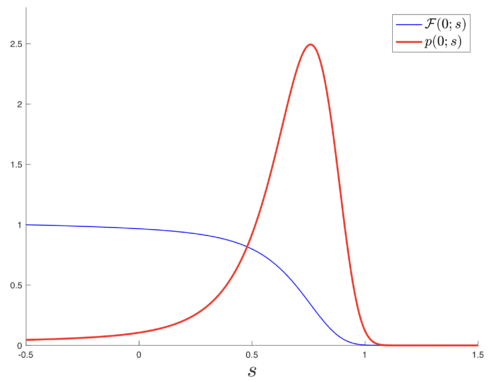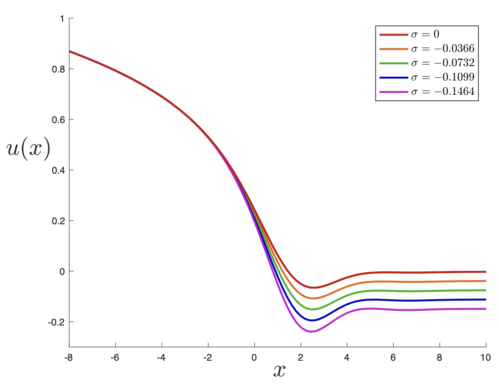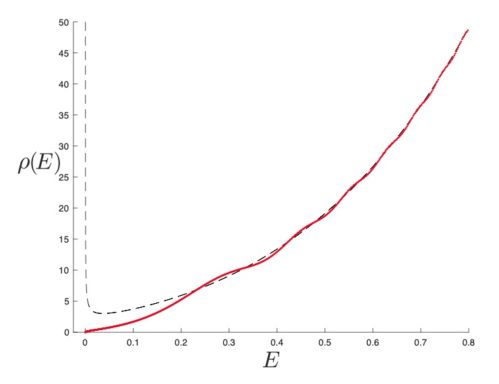A New Distribution
 The red curve in this figure is the probability distribution of the ground state energy [latex]E=s[/latex] of the microstate spectra of quantum completions of JT gravity. Put differently (the way Wigner might have) if you ask what are all the discrete spectra that are compatible with the leading semi-classical result for quantizing JT gravity (the famous Schwarzian result for the density of states: [latex]\rho(E)=e^{S_0}(4\pi^2)^{-1}\sinh(2\pi\sqrt{E})[/latex]), this curve gives the shape of the distribution of ground states. (The blue curve is simply the associated CDF.) I first uncovered this distribution in a paper last year, with further insights and generalizations in a paper earlier this year, along with the distributions for higher energy levels that follow from it. But the exciting new result of my paper from a few weeks ago is that I have now shown that it is a solution of an ordinary differential equation (or a family of them). This allows for some powerful universal things to be said analytically about the properties of the distribution!
The red curve in this figure is the probability distribution of the ground state energy [latex]E=s[/latex] of the microstate spectra of quantum completions of JT gravity. Put differently (the way Wigner might have) if you ask what are all the discrete spectra that are compatible with the leading semi-classical result for quantizing JT gravity (the famous Schwarzian result for the density of states: [latex]\rho(E)=e^{S_0}(4\pi^2)^{-1}\sinh(2\pi\sqrt{E})[/latex]), this curve gives the shape of the distribution of ground states. (The blue curve is simply the associated CDF.) I first uncovered this distribution in a paper last year, with further insights and generalizations in a paper earlier this year, along with the distributions for higher energy levels that follow from it. But the exciting new result of my paper from a few weeks ago is that I have now shown that it is a solution of an ordinary differential equation (or a family of them). This allows for some powerful universal things to be said analytically about the properties of the distribution!
This is fully analogous to what happened for the well-known Tracy-Widom distribution for the largest (or smallest) energy of Gaussian random hermitian matrices. While many workers (such as Forrester) had uncovered important aspects of the distribution, and while it was known that it can be expressed as a particular Fredholm determinant, Tracy and Widom broke new ground in 1994 by showing that the distribution was governed by a well known ODE – the Painleve II equation – and in particular can be given in terms of a special solution of it studied earlier by Hastings and McLeod. The result helped forge further connections between properties of random matrix theory and several interesting areas of mathematics and mathematical physics. Furthermore, […] Click to continue reading this post











